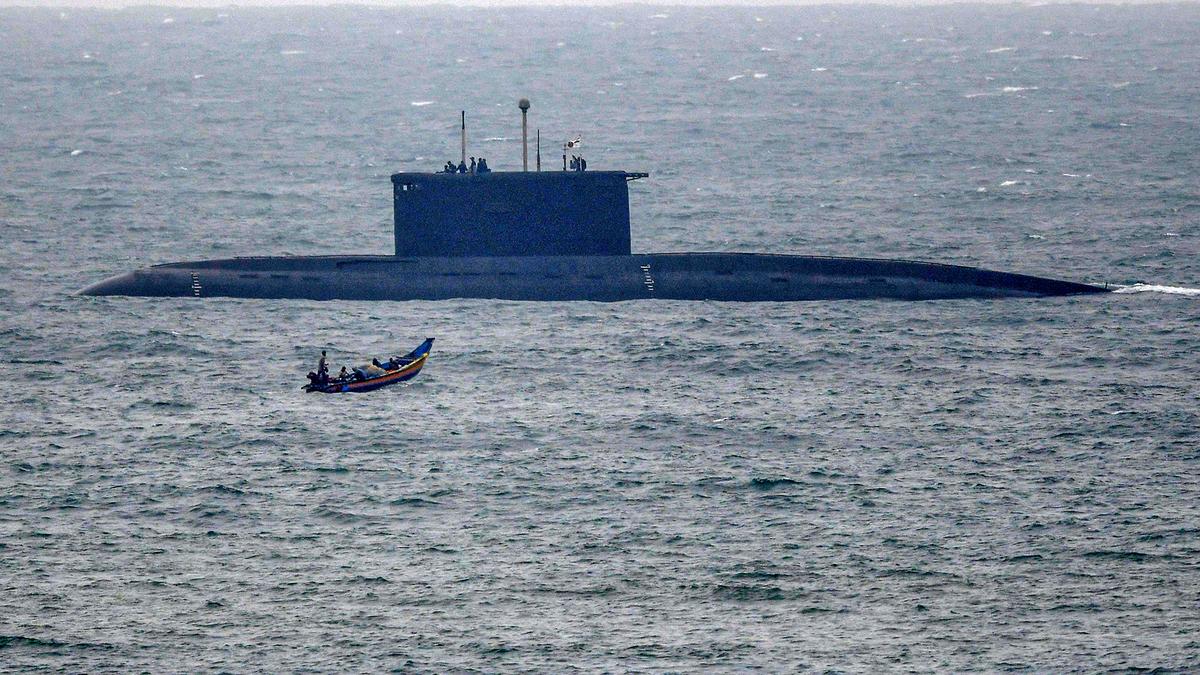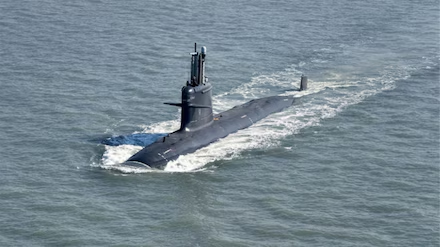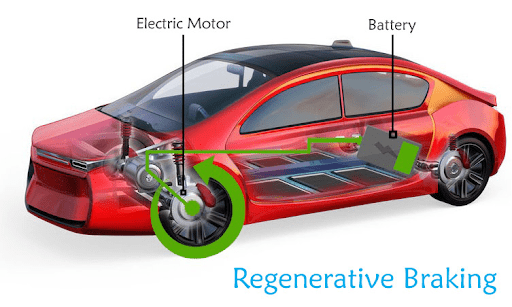The Hindu : Page 04
Syllabus : GS 3 : Science and Technology
India’s Project-75I submarine deal, valued at ₹43,000 crore, advances with field trials completed for contenders Thyssenkrupp Marine Systems (Germany) and Navantia (Spain).
- Evaluation results will determine technical compliance, crucially focusing on Air Independent Propulsion systems. German and Spanish leaders plan visits to lobby for the inter-governmental agreement.

About Project-76:
Project-76 Overview
- Under Project 76, the Warship Design Bureau of the Indian Navy is working on designing and developing the country’s first indigenously conventional diesel-electric submarine.
- The Indian Navy wants to build 12 submarines under Project 76.
- Envisioned as air-independent propulsion (AIP)-equipped diesel-electric attack submarines, these submarines, expected to have a submerged displacement of 3,000 tons, represent a leap beyond their foreign-designed predecessors like Project-751 (India) and Project-75 submarines.
- It aims to succeed the Sindhughosh (Kilo) class, emphasizing the Navy’s commitment to maintaining a robust 3,000-ton class of submarines.
- It is expected to feature some of the most advanced features such as, indigenous Weapon Control system and Lithium-ion batteries.
- It represents a pivotal milestone in India’s pursuit of maritime supremacy, amalgamating top-tier French technology from Project 75 and the expertise of German/Spanish collaboration from Project 751 (India).
- The objective is to initiate the construction of the prototype by 2028.
- This undertaking holds immense significance for India’s submarine-building capabilities, aiming to reduce reliance on foreign Original Equipment Manufacturers (OEMs) for submarine design.
Project-75I:
- Project-75 (I) Overview: Project-75 (I) aims to construct six Kalvari Class Diesel-Electric Attack submarines in India.
- Objective: It focuses on enhancing indigenous submarine construction capabilities with advanced technologies and weaponry.
- AIP System: The key enhancement over its predecessor is the introduction of a Fuel-cell-based Air Independent Propulsion (AIP) system.
- Stealth and Technology: Submarines under this project feature advanced stealth capabilities, low radiated noise levels, and modern sensor suites.
- Indigenisation: Each submarine in Project-75 (I) is mandated to achieve a minimum of 45% indigenous content, reaching up to 60% by the sixth submarine.
- MSME Development: The project aims to boost the submarine building industry and support MSMEs in manufacturing associated equipment.
- Size and Capacity: These submarines may be larger than those built under Project-75, enhancing operational capabilities.
- Implementation Challenges: Delays and challenges in technology adoption and infrastructure development have affected the overall progress of the project.
- Strategic Importance: Project-75 (I) plays a crucial role in India’s naval modernization and self-reliance goals under the Atmanirbhar Bharat initiative.











